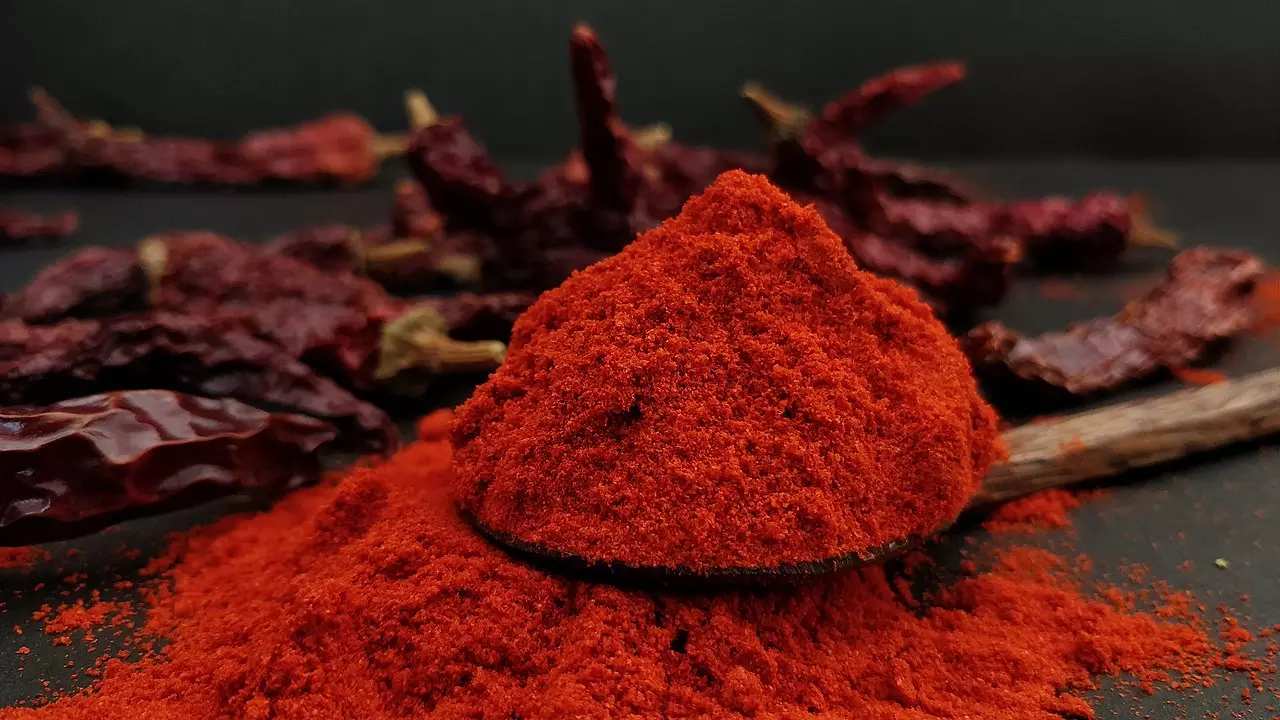
Why the versatile Byadagi chilli is losing its zing for Karnataka farmers
The sudden price crash of Byadagi chillies, which have uses ranging from culinary to cosmetic, is merely symptomatic of the larger issue plaguing farmers

The thin, wrinkled Byadagi chillies, known for their brilliant red, were in the news early this week for all the wrong reasons. The price of these chillies — which have uses ranging from culinary to cosmetic — collapsed from about Rs 20,000 per quintal to Rs 8,000 per quintal, resulting in a loss of around Rs 200 crore on a single day, triggering violent protests from farmers.
Elite variety
Among the 400 distinct varieties of chillies produced in the country, Byadagi chillies are considered among the top two that fetch the highest prices in the market — the other one being from Guntur in Andhra Pradesh. Prices had reached an all-time high of Rs 30,000 per quintal for the Byadagi variety last year, leaving farmers nearly in a frenzy to double the production.
It led to a bumper crop all right, but farmers did not profit from it. That’s because nearly 40 per cent of the previous year’s produce was still stocked in the 30-odd cold storages in Byadagi’s Agricultural Produce Marketing Committee (APMC) yard. Suresh Gowda Patil, former head of the APMC, argued that this is what caused the prices to collapse.
However, that’s is not the entire story. The sudden price crash is merely symptomatic of the larger issue plaguing local farmers.
Lipsticks to pain balms
Byadagi chillies get their name from a small town in north Karnataka, about 500 km from Bangalore. The variety’s revenue-generating capacity and high demand is largely because of its various uses. For example, the oleoresin oil extracted from these chillies is used to make nail polish and lipsticks. The chilli is also widely used to make food products because of its vibrant red hue and mild spiciness. In February 2011, it was recognised with a Geographical Indication (GI) tag (number 129).
One ton of Byadagi chillies can yield around 50 litres of oleoresin. The extraction facility is based in Byadagi itself. Once refined, the chillies are sent to Kerala for further processing and then exported to the US, Japan, and European markets.
Indian chilli market
According to Statista, in FY 2023-24, Andhra Pradesh was the largest producer of chillies among all Indian states. The production volume amounted to over 627 thousand metric tonnes, constituting nearly 32 per cent of total production in India.
Telangana and Madhya Pradesh followed Andhra, while Karnataka was in fifth place with a production of 169 thousand metric tonnes, constituting nearly 9 per cent of the total production in the country. India has 400 varieties of chillies and produced about two million metric tonnes that year. The economic contribution of chillies is over Rs 13,000 crore.
Dabbi and Kaddi
There are two distinct types of Byadagi chillies: Dabbi and Kaddi. The Dabbi variety, noted for its smaller, rounder shape, is known for its colour, aroma, and taste. The Kaddi chilli is more elongated in shape, wrinkled, and contains fewer seeds. Dabbi chillies are preferred for making spices and extracting oleoresin, which food manufacturers and cosmetics use in nail polish and lipsticks.
The harvest season for the Byadagi chilli starts in January and ends in May, with an annual yield of around 21,000 kg. However, chillies are sensitive to climatic conditions, and weather patterns can impact the yield and quality of the crop.
Byadagi chillies are marketed through the APMC chilli market, which has annual revenues of around Rs 3,000 crore and attracts traders from the neighbouring Andhra Pradesh. These traders are drawn by competitive pricing, prompt payment, and accurate chilli measurement.
Loss of flavour
However, the big disrupter has been the cheaper alternative chilli varieties, which have directly impacted the sale of Byadagi chillies and hurt farmers’ profitability.
Another issue facing farmers is the presence of multiple intermediaries in the supply chain, resulting in a lack of transparency and fair pricing for farmers and contributing to price fluctuations.
Adverse weather conditions, such as droughts and high temperatures, can significantly impact the yield of chilli crops. Unsustainable farming practices, such as heavy application of fertilisers, pesticides, and agrochemicals, also contribute to price fluctuations.
Sustainable farming
Initiatives have been taken to promote sustainable chilli farming and mechanised harvesting processes to address these challenges.
For instance, the Netherlands-based IDH (Sustainable Trade Initiative), which connects farmers producing commodities sustainably through value chains to buyers and consumers, has partnered with the multi-state fertiliser-marketing cooperative society, IFFCO Kisan, to test and scale innovative digital solutions to support the sustainable production of chillies in India.
Furthermore, the Indian government has established large chilli processing plants in Mahabubabad district in Telangana to support chilli farmers and improve the quality of the chilli produced.
How MSP could help
Officials from the APMC suggest that the Minimum Support Price (MSP) scheme could have offered a buffer against the decline in Byadagi chilli prices, ensuring a base income for growers. This scheme is designed to secure a minimum payment for agricultural products, offering protection against the unpredictability of market prices.
Introducing a guaranteed price floor for chillies would mean farmers can count on a certain revenue, even during surplus production or variable market trends. APMC representatives indicate that plans are underway to apply the MSP scheme to Byadagi chillies.
Both the government and sector participants are also making efforts to create equitable marketing strategies, guaranteeing that growers get reasonable compensation for their crops. The APMC has also decided to open the market twice a week to better manage the high volume of chillies and improve farmers’ pricing.

